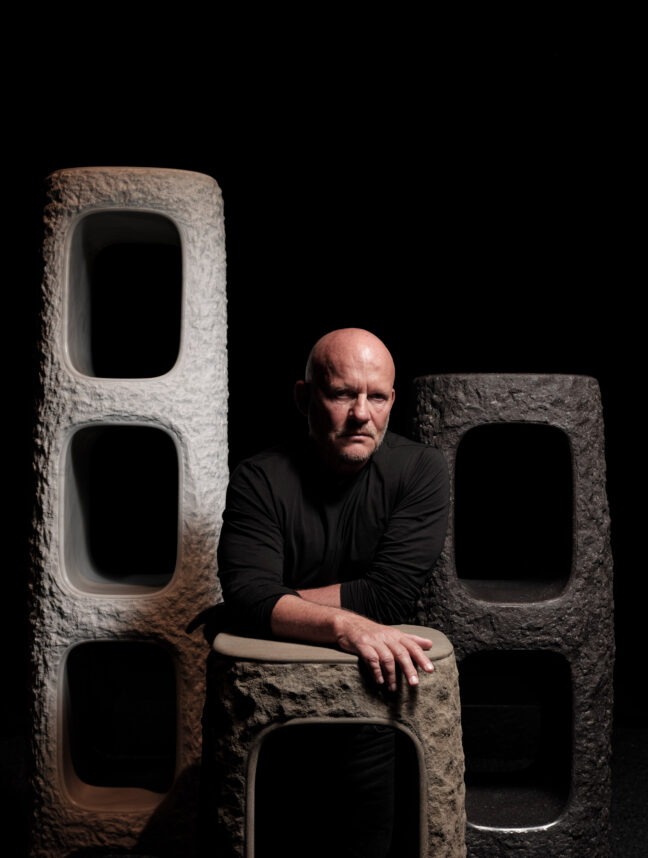On the heels of releasing his Gravitas furniture collection with Mexican stone purveyor ARCA, the Belgian architect talks to Effect about his ongoing quest to imbue design with innate purpose and presence
Over the past four decades, Belgian polymath Vincent Van Duysen has emerged as a leading voice in architecture and design. Major projects like the monastery turned high-end hotel August in Antwerp, Portuguese vacation hideaway Casa M, and celebrity collaborations have all bolstered his reputation. Working across different fields has allowed the consummate minimalist and self-proclaimed modernist to lend his well-honed expertise to architecture, furniture, home accessories and more.
The widely accoladed talent’s exhaustive portfolio includes projects developed everywhere from the Hamptons to Dubai and Hong Kong. Working extensively in his native Flanders, Van Duysen has helped draw international attention to the region’s ever-burgeoning scene. A personal milestone is the Winery VV in Knokke, Belgium’s affluent seaside resort. The complex is as much a testament to the architect’s ability to respond to contextual and historical cues as it is his dexterity in coalescing these leads in refined compositions.
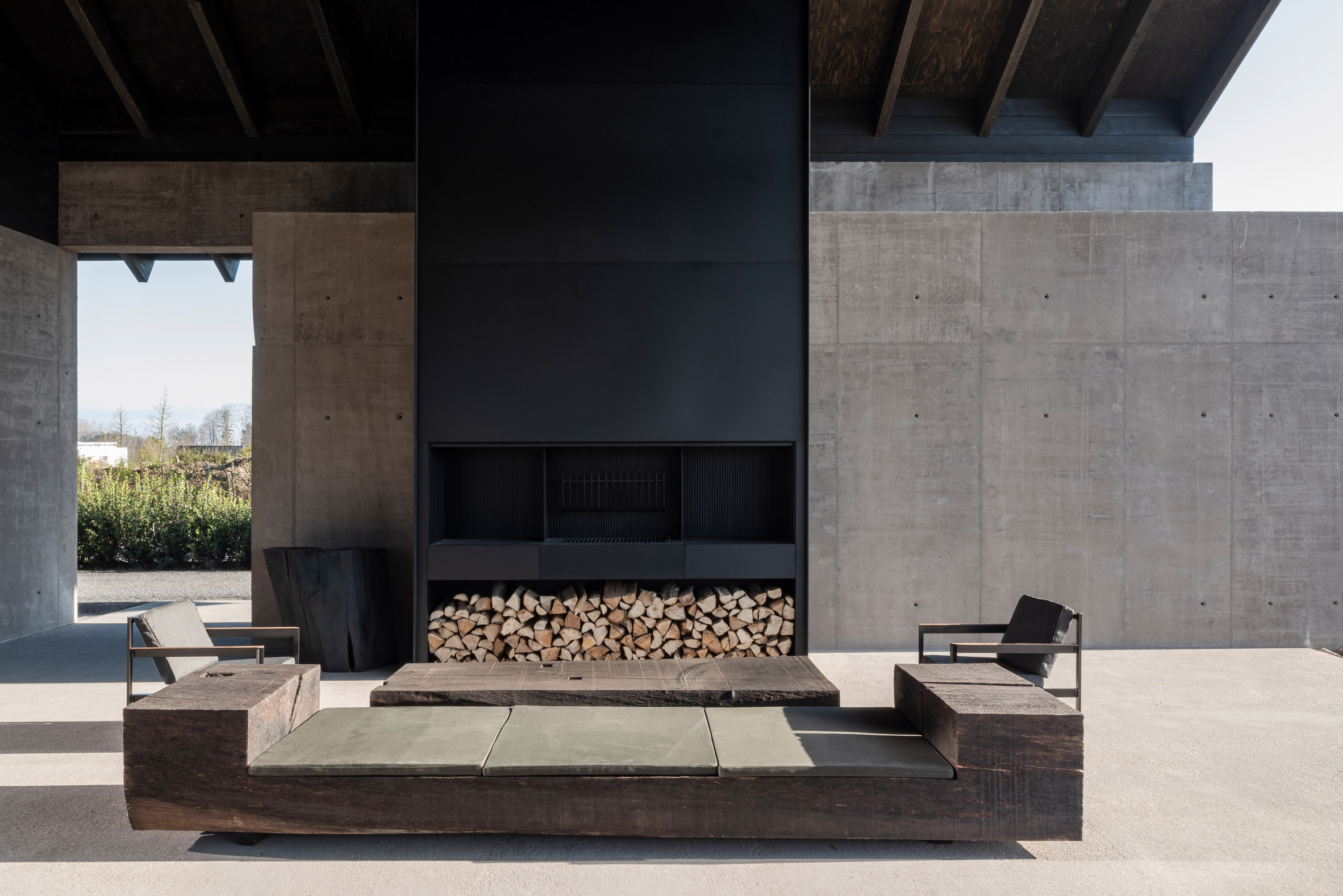
As Molteni&C and Dada creative director since 2016, former art director at Sahco for Danish textile giant Kvadrat, and frequent Zara Home collaborator, the multi-disciplinarian has firmly rooted himself in the furnishing industry. Regardless of medium, Van Duysen always calls on tradition, context, and a vast array of inspirations in an effort to distil what traits are truly timeless and transcendent; what is essential in both nature and the human experience. Translating this career-defining preoccupation in tangible application centres on harnessing tactile materials, textures and light. At the end of the day, functionality and clear implementation remain core considerations. For Van Duysen, it’s all about the physical experience.
I’ve always liked architects that have or had a warm and contemporary approach with innovative uses of materials
Vincent Van Duysen
The architect recently collaborated with Mexican materials purveyor ARCA on a succinct capsule collection of book shelves, tables and settees. Inspired by the ever-potent principles of classical architecture and the natural world in equal measure, the Gravitas collection demonstrates how sumptuous stones specific to different parts of the world can be hewn in a unified fashion, especially if the process and form reflect universalities. Van Duysen spoke to Effect about his philosophy, approach and this latest endeavour…
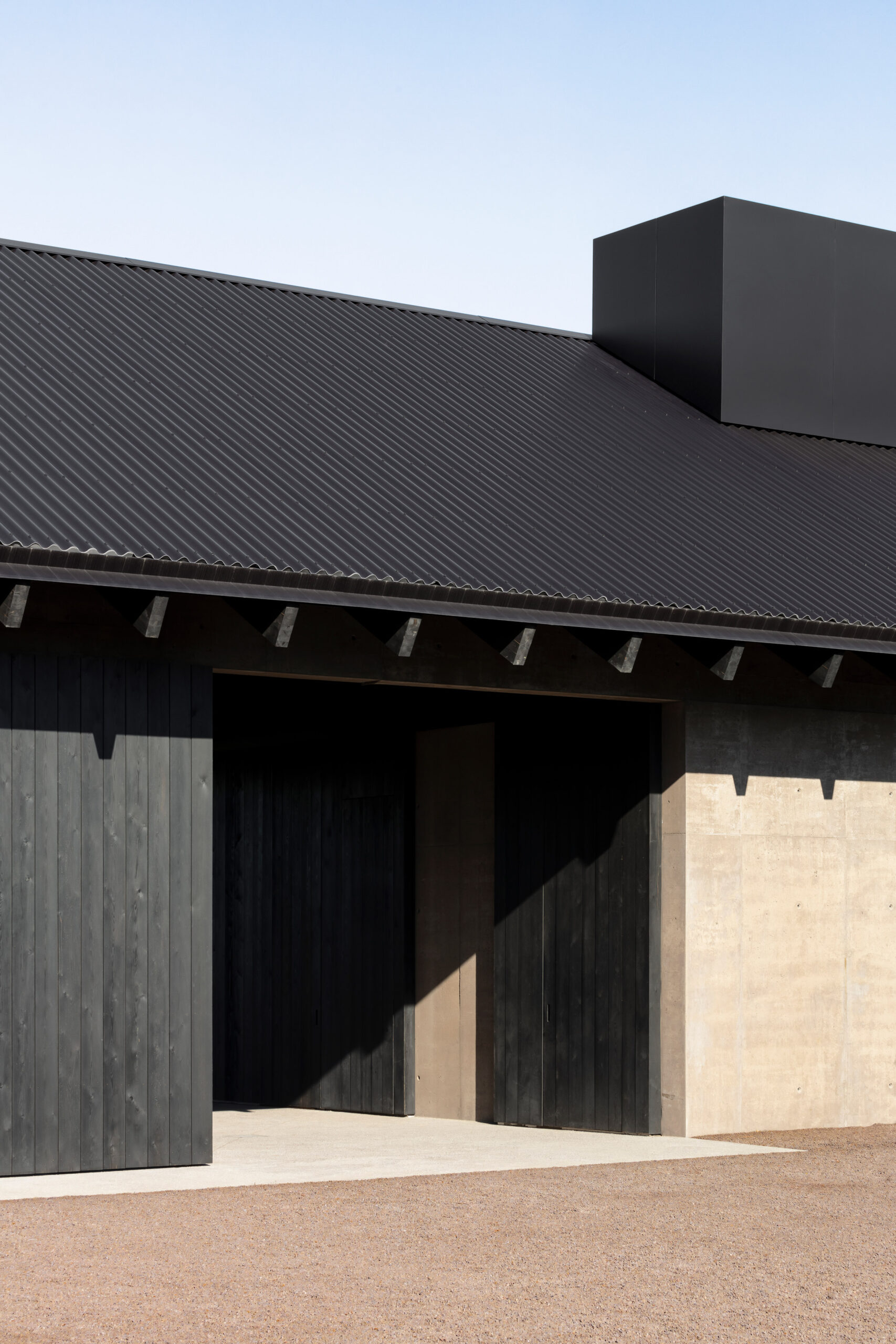

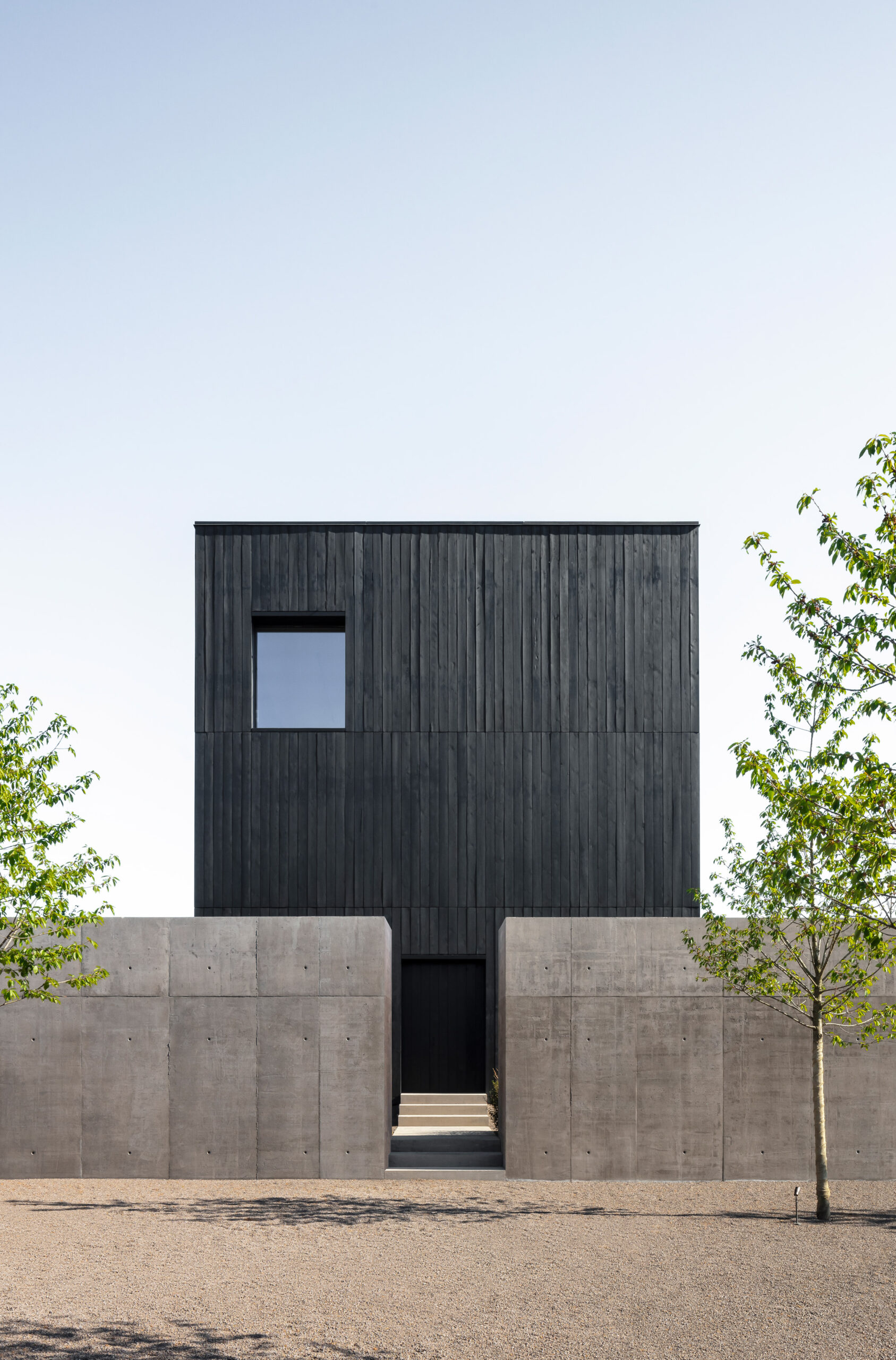
How did your formative experiences working with Aldo Cibic and Jean de Meulder influence your approach and style?
When I started it was 1985. I was passionate about architecture and design but still had a lot to learn. Postmodernism was emerging as a recognisable style and, in many ways, that influenced my outlook. I was attracted to Memphis, so I got in touch with Cibic who was working at Sottsass & Associati. Right from the beginning, we had a great human connection. I liked the playfulness, working on archetypal designs with a twist, modifying dimensions and adding atypical details and unusual materials. It was all new and fresh, a one-of-a-kind approach. He was like a mentor to me. He strived for the essence and beauty of life, for essentialism, a sort of pre-minimalism.
I am always designing in my mind; never from a blank canvas.
Vincent Van Duysen
I consider Jean De Meulder the Andrée Putman of Belgium; a man of great taste; a viveur who listened to jazz music; who favoured non-colours, natural materials. He had a great influence on me as he established a warm minimalist style, characterised by desaturated colours and organic textures.
Utilising nature and classicism as common sources of inspiration, how are you able to translate these reference points in a contemporary light?
I like timeless oeuvres, work that is able to move and to inspire me. Ancient architecture, for example, Egyptian, Roman, nomadic, or tribal constructions. I am a modernist at heart, and some of the masters that have influenced me are Le Corbusier, Louis Kahn, Luis Barragan, and Carlo Scarpa, to name a few. I’ve always liked architects that have or had a warm and contemporary approach with innovative uses of materials, and adaptations to the modern-day needs, and that is how I have translated all of those influences into my pure and serene style, made of well-balanced space in dialogue with light.
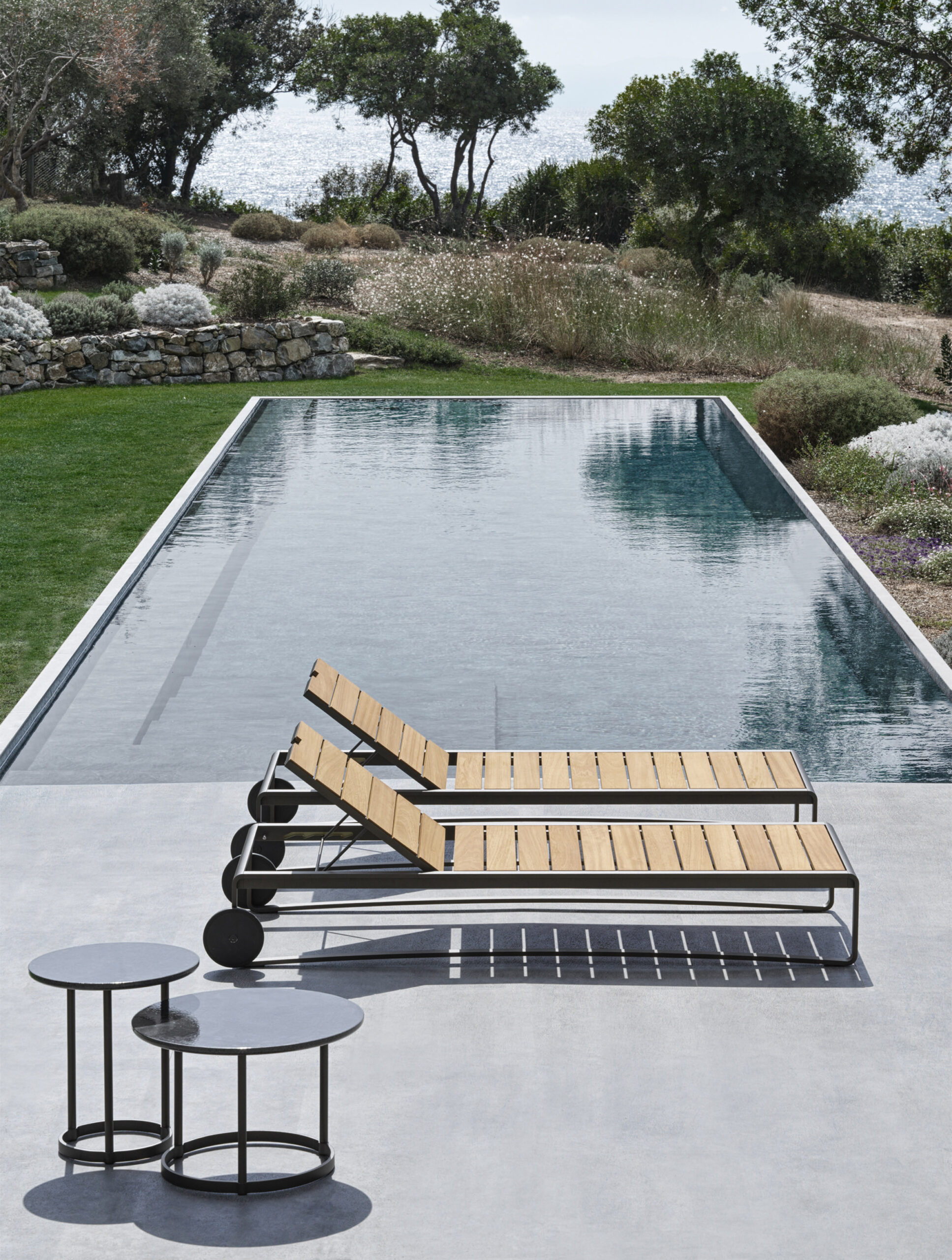
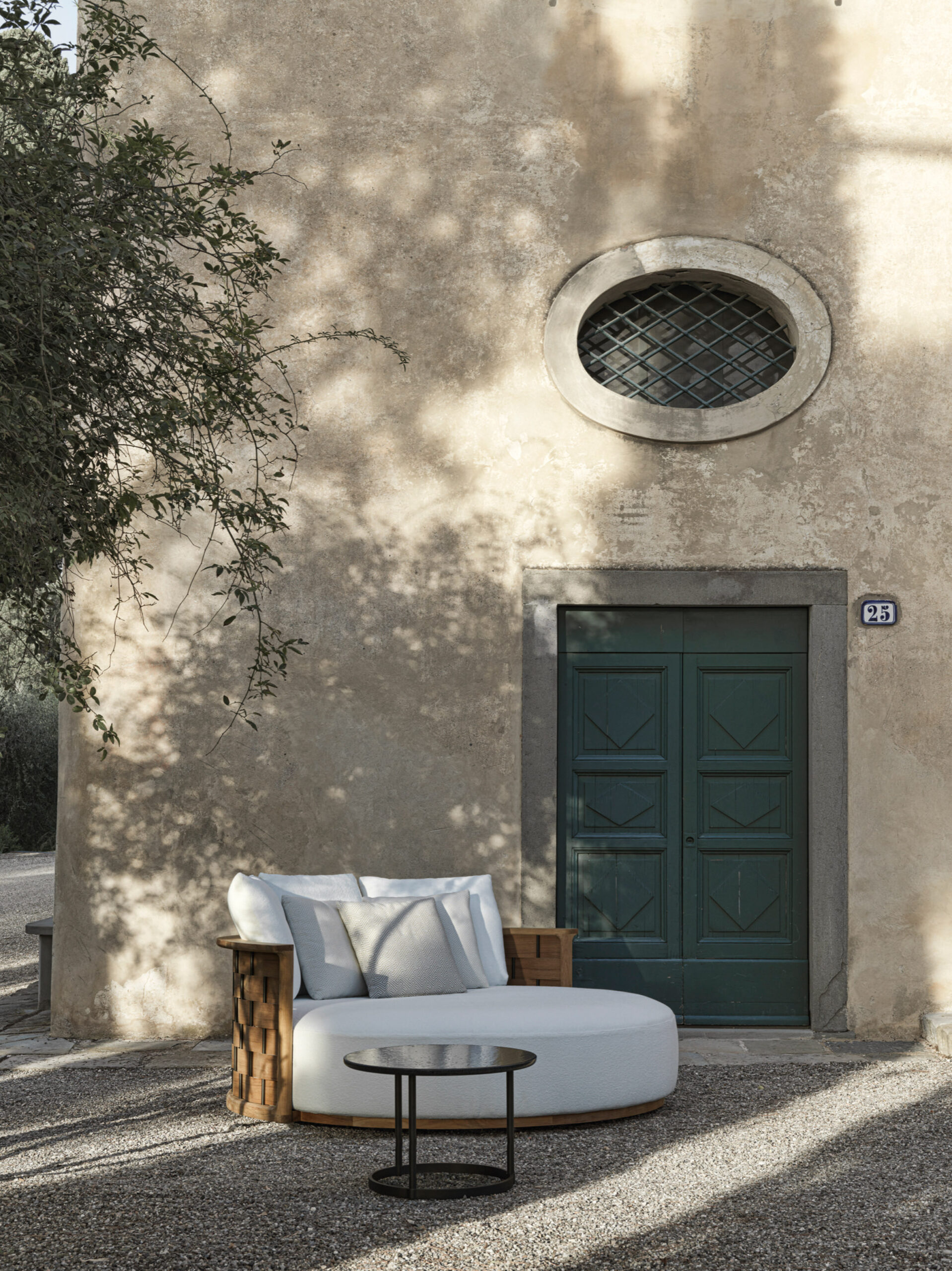
In what ways are you able to harness material and form in distilling the essence of an object or space? Why is tactility, as much as divine proportion and monumentality, important in imbuing a design with emotional value but also functionality?
Natural materials are the focus of my creations. They instil a sense of serenity and wholeness into my interiors or products. I think a significant part of the emotion in my work comes from my consideration for the materials within a space. Organic matter is key to my work and good architecture. I am talking about raw elements that acquire a patina of timelessness and exquisiteness and warmth as they age, such as wood, textiles, concrete, stone. Together, different materials convey a sense of holisticness that makes human beings feel protected, comfortable, surrounded by warmth and beauty as if in a shrine or shelter. The tactility of a surface via its materiality is also an added sensorial touch to my synthetic approach.
Often, a significant part of the emotion in my work comes from my consideration for the materials within a space.
Vincent Van Duysen
How are you able to apply your working philosophy across architecture, design and product design? How is working in each of these areas different?
I have never thought of interior design as being severed from architecture and product design: interiors are architecture. Interiors and exteriors are closely interwoven. I perceive architecture in a broader way: it is not only the physical construction of space, but creating spaces for people to live in surrounded by art, furniture pieces and objects. All these elements are part of this art of living that is part of my parcours, a sort of gesamtkunstwerk. I am aware of the different scales of a project.
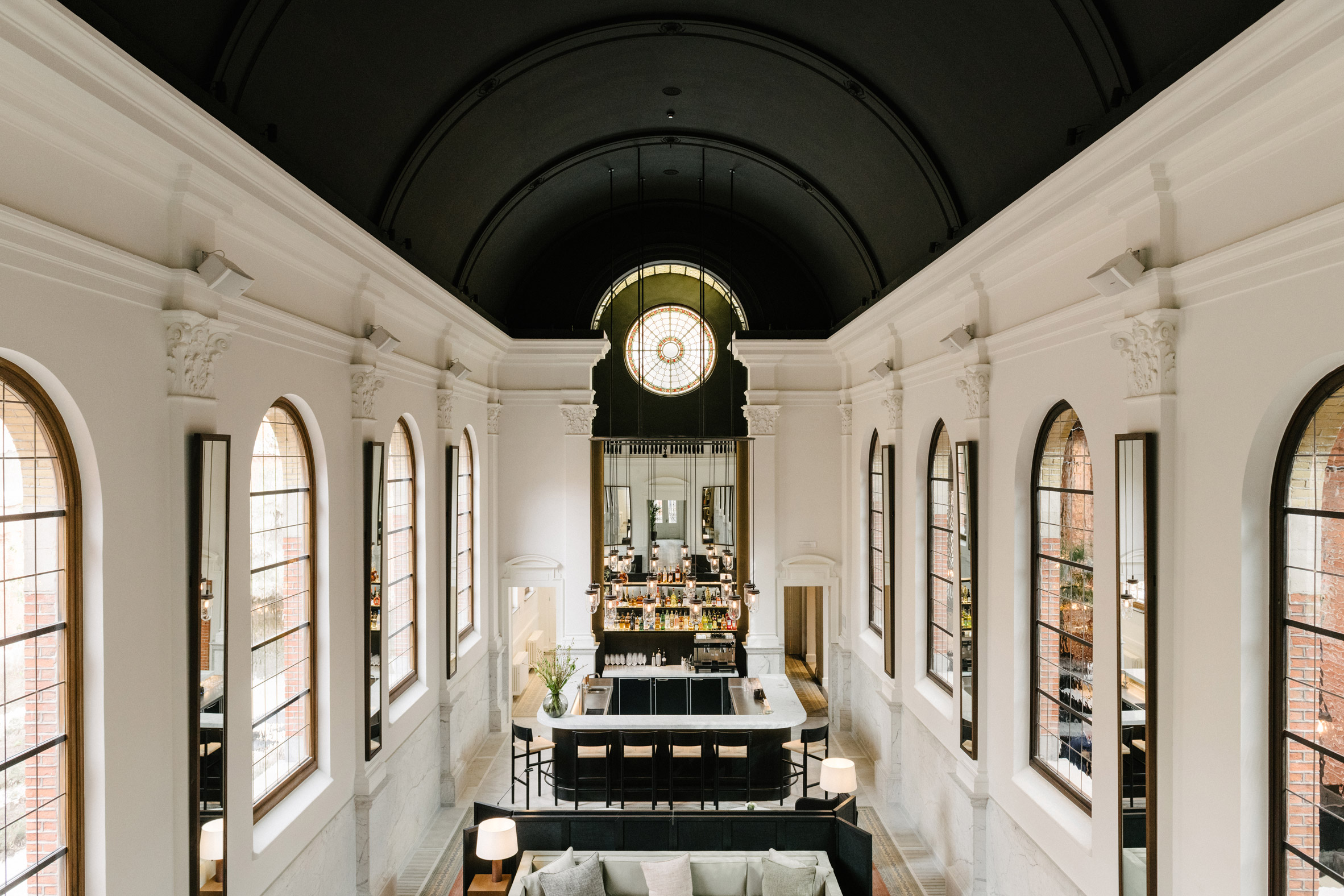
What is the nature of your process when developing a new concept? What are some of your essential analog and digital tools?
My design process is constant. I am always designing in my mind; never from a blank canvas. I enjoy being as observant as possible and having a strong visual approach. I regularly sit with my team and discuss ideas and directions to achieve a shared vision. My ongoing inspiration comes from travels, conversations, exhibitions, art, people and everyday life.
Which have been some of your key architecture projects?
All of them somehow have been key to my success. I could mention my first apartment in Antwerp that put me on the map, all the way to my latest home, Casa M in Portugal. I could mention some product designs or the beginning of my collaboration with Molteni, or the Winery in Knokke. I couldn’t really pick one.
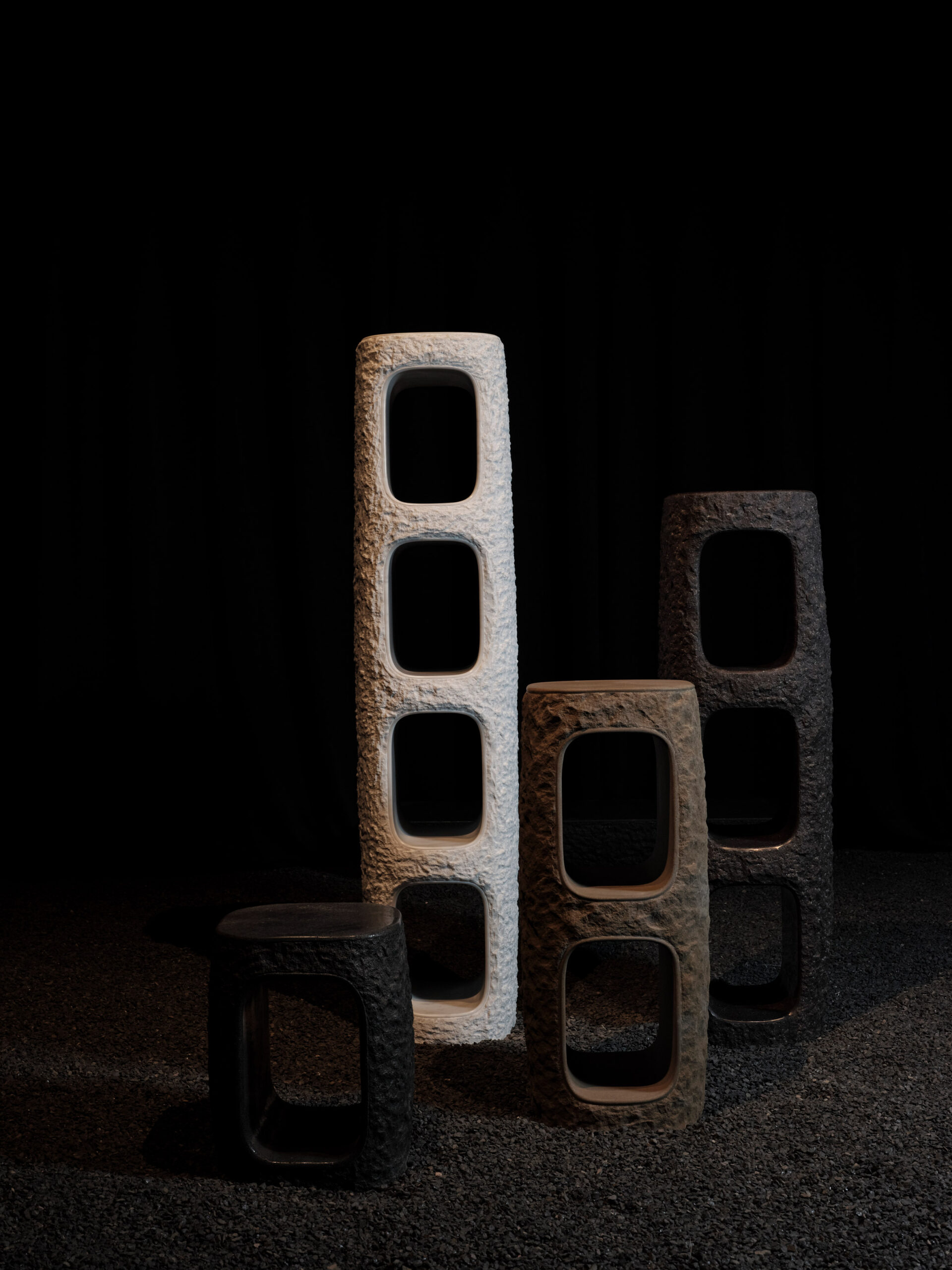

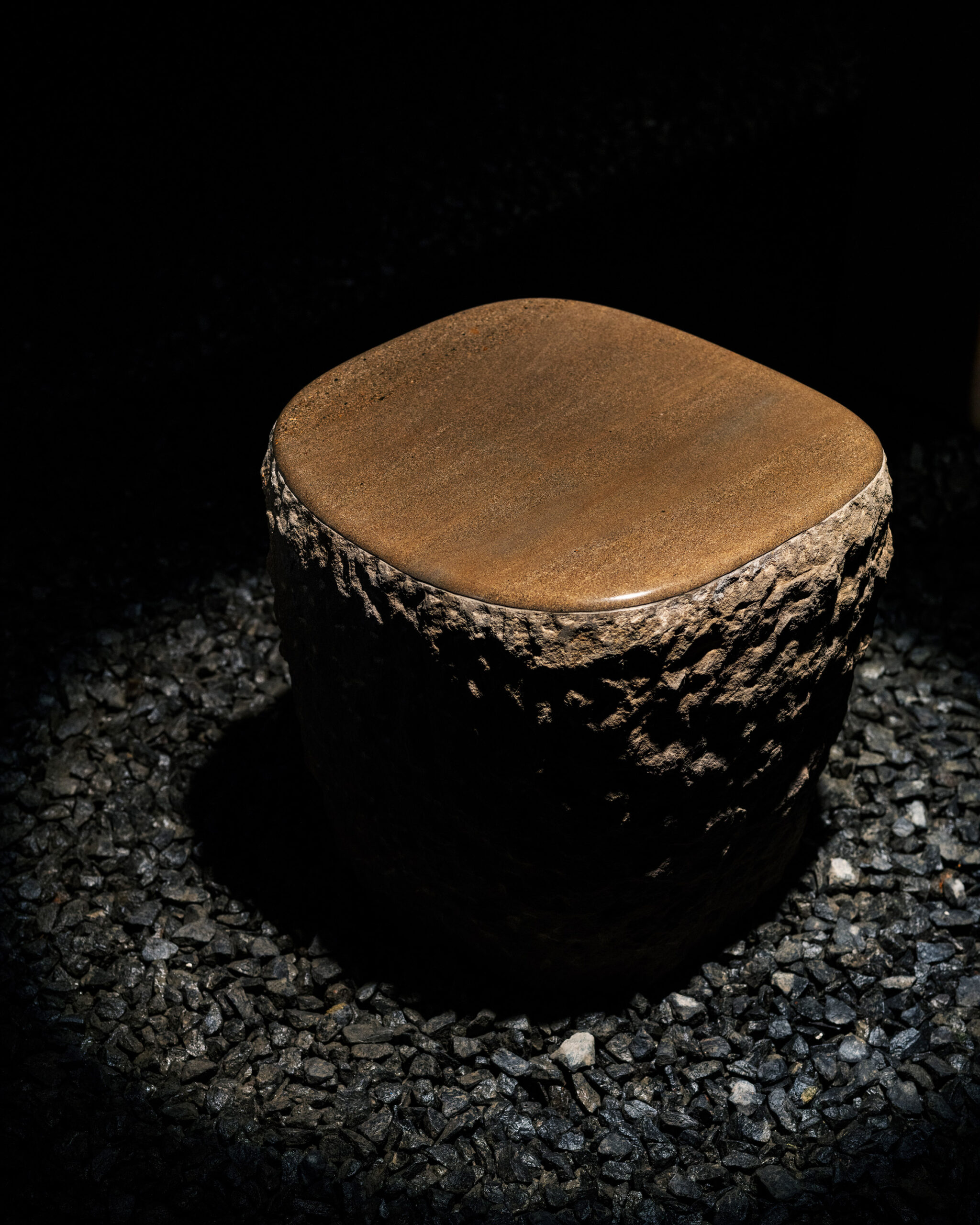
Talk about the recent Gravitas collection for ARCA. What do these new furnishings represent regarding your current thinking and preoccupations?
Gravitas was born out of the relationship between nature, space, and mankind. The series hinges on conceptual yet empirical juxtapositions: rough versus polished surfaces and gravity versus lightness. The result is very organic, balancing the utilitarian and sculptured. The works of Isamu Noguchi, Anish Kapoor, James Turrell and Roni Horn served as primary sources of inspiration. True to my DNA, I’ve selected materials in desaturated, earthy hues from both European and Mexican quarries, and enlisted artisans and craftspeople from Spain, Italy and Mexico.
Natural materials are the focus of my creations with Gravitas. They instil a sense of serenity and wholeness into my projects. Often, a significant part of the emotion in my work comes from my consideration for the materials within a space. In this instance, my approach to materials was quite different—the stones selected are integral to the story I want to tell. In this collection, the stone is the protagonist.
Read more: Architects | Architecture | Belgium | Furniture | Interior Design | Interior Designer | Minimalism



